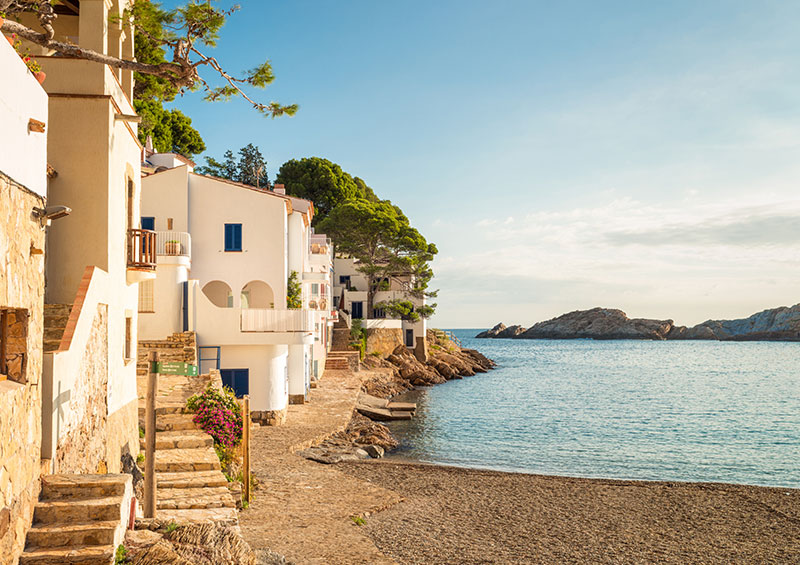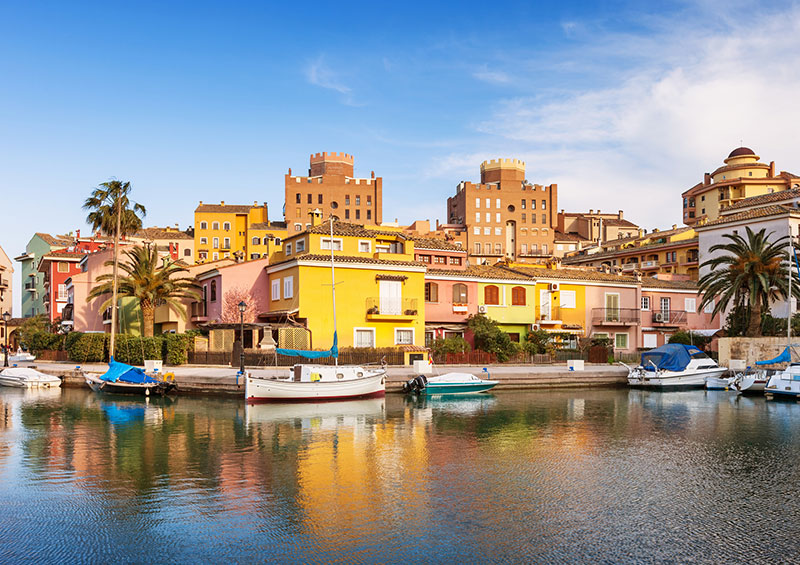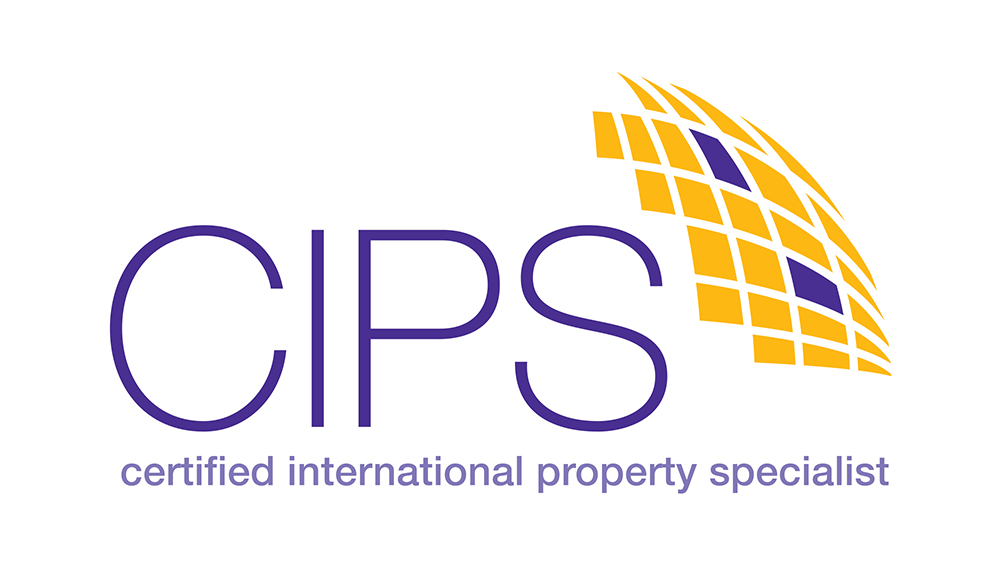
Spain’s real estate market is attracting international buyers and investors, including Americans, who are flocking to its diverse landscapes and promising opportunities. According to the General Council of Notaries in Spain, from 2019 to 2021, the number of Americans residing in Spain surged by 13%, while home sales to Americans soared by 88% from the first half of 2019 to the first half of 2022. Ranking second to the Danes in paying the highest price for real estate, Americans are making significant contributions to Spain’s market growth.
Spain’s scenic beauty, from Costa del Sol’s beaches to Barcelona’s bustling streets, beckons tourists, second home owners, and new residents seeking Mediterranean bliss. Retirees are drawn by the country’s favorable climate and affordability, while remote workers find its blend of culture and modernity ideal.
Why invest in Spain? In this blog I explore the Spanish real estate landscape and what makes the country not only a viable alternative to traditional investment destinations such as Mexico but an excellent first choice as well. My focus is on cities with outstanding investment opportunities, and my goal is to provide essential tips on navigating this dynamic market. From seaside villas to urban apartments, Spain offers something for every investor.
Table of Contents
Spain As A Real Estate Investment Destination
Spain has always been a top choice for international investors looking for lucrative real estate opportunities worldwide. In the CBRE’s 2024 Investor Intentions Survey, the country ranked fourth on the list of the most attractive European countries for investors. Madrid and Barcelona also took the third and seventh place in the rankings for the most attractive European cities for investors.
Since the pandemic, the country has seen a resurgence in real estate investing, resulting in a boom in 2022. The market has shown some signs of correction, and with competition starting to ease, buyers and investors are presented with more favorable opportunities.
Foreign investors continue to be a significant force in the country’s real estate investment sector. According to the Instituto Nacional de Estadistica (INE), the Spanish Statistical Office, the number of foreign investors in Spain’s real estate market is growing, accounting for 21.4% of all buyers in the first half of 2023. This represents the highest percentage of foreign real estate investments ever recorded in the country.
Why does Spain consistently rank high among investors’ top choices for real estate? The reasons are manifold:
- A thriving market
Spain’s property market is on the rise. After a period of recovery, housing demand is high, fueled by a growing economy and a stable political climate. This translates to potential for capital appreciation, meaning your property’s value could increase over time. - Tourist paradise, rental powerhouse
Spain is a tourism haven. In 2023, it welcomed 85.1 million foreign visitors according to the INE, surpassing France as the number 1 tourist destination in the world. This thriving tourism industry creates a consistent demand for rental properties. Whether you choose a charming city apartment or a beachfront villa, there’s a high chance of attracting long-term or vacation rentals, bringing you a steady stream of income. - Diverse and vibrant lifestyle
Spain offers an enviable lifestyle. Imagine waking up to sunshine most days of the year, with beautiful landscapes and a relaxed culture surrounding you. This high quality of life attracts not only tourists but also potential future residents, keeping rental markets strong. - Future residency
Investing in Spanish real estate isn’t just about financial gain. It opens doors to a potential future in Spain, particularly in retirement. Owning property can make it easier to obtain residency permits, allowing you to enjoy the Spanish way of life firsthand. - Easier to buy property
Except for military land or property near borders, foreigners are not restricted from buying property in Spain. This makes property ownership easier compared to Mexico or several Caribbean states which impose certain restrictions on land ownership by foreigners.
Real estate trends in Spain
Several market trends are seen to influence real estate investments in the coming years. These include:
- Higher prices favoring foreign investors
Property prices are not expected to go down and may in fact see moderate increases in the coming months, particularly in the primary market which struggles with labor shortages and increasing construction costs. This makes Spanish real estate more attractive to foreign investors who tend to have greater purchasing power. - Insufficient supply
With the surge in real estate sales in 2022, the supply of homes in the country, whether in the primary or secondary markets, may not be enough to meet the increasing demand. Interested buyers and investors can benefit greatly from working with experienced realtors who can guide them to the right property in this competitive environment.
Top Locations For Real Estate Investment

Foreign investors seek not only attractive properties but also prime locations poised for growth and profitability. Here are some of Spain’s top investment destinations, each offering its unique blend of charm and opportunity.
Barcelona
Nestled along the shores of the Mediterranean, Barcelona stands as a beacon of culture and creativity. Boasting architectural marvels by Antoni Gaudí such as the La Sagrada Familia basilica, world-class cuisine, and a vibrant arts scene, Barcelona entices investors seeking cosmopolitan living. With strong rental demand fueled by a burgeoning tech industry and thriving tourism, Barcelona presents compelling opportunities for long-term growth and steady returns.
Madrid
As the capital of Spain, Madrid pulsates with energy, innovation, and opportunity. Home to multinational corporations, prestigious universities, and iconic landmarks, Madrid attracts investors drawn to its dynamic economy and high-quality of life. With a diverse real estate market catering to various budgets and preferences, Madrid offers something for every investor, from luxury apartments in the city center to family-friendly neighborhoods on the outskirts.
Costa del Sol, Málaga, and surrounding areas
Costa del Sol is a region that offers a sun-soaked haven with its picturesque coastline and charming towns. Málaga, the vibrant regional capital, is a cultural hub with world-class museums like Museo Carmen Thyssen Málaga and Museo de Málaga. A thriving culinary scene, strategic location and booming tourism industry are also investor magnets. From the cosmopolitan allure of Marbella to the authentic charm of Nerja, this region consistently experiences strong rental demand and potential for capital appreciation. As one of Spain’s most sought-after destinations, it promises attractive opportunities for those seeking a blend of leisure and profit.
Mallorca and Ibiza
For those seeking a slice of island paradise, Mallorca and Ibiza offer unrivaled beauty and investment potential. With their pristine beaches, azure waters, and vibrant nightlife, these Balearic islands attract a global clientele of discerning travelers and property buyers. From luxury villas overlooking the Mediterranean to chic apartments in bustling seaside towns, Mallorca and Ibiza cater to diverse tastes and investment preferences.
Valencia
Nestled along Spain’s eastern coast, Valencia is emerging as a top destination for real estate investment. With its historic architecture, bustling markets, and thriving culinary scene, Valencia offers a blend of tradition and modernity that attracts investors seeking value and potential. With affordable property prices compared to other major cities, Valencia presents opportunities for both rental income and long-term appreciation.
Seville
Immerse yourself in the timeless charm of Seville, where centuries-old architecture, vibrant festivals, and rich cultural heritage converge. As the capital of Andalusia, Seville offers a distinctively Spanish allure that resonates with investors seeking authenticity and charm. With a growing tourism industry and a diverse real estate market encompassing historic apartments, modern developments, and traditional Andalusian homes, Seville promises both cultural immersion and investment potential.
Investment Considerations

Costs
Investing in Spanish real estate offers a tantalizing array of opportunities, but understanding the costs involved is essential for making informed decisions and maximizing returns. Let’s delve into the average property prices across key locations in Spain and explore additional costs you need to consider, from taxes to renovations and property management fees.
- Barcelona: The average price of a home stands at a lofty $1,249,597 USD, with properties ranging from $494,406 USD to $30,424,993 USD. The most sought-after property types include both apartments and houses, with amenities such as terraces, balconies, air conditioning, and gardens.
- Madrid: In the heart of Spain, Madrid commands an average property price of $1,575,580 USD, ranging from $498,752 USD to $20,210,888 USD. With apartments and houses dominating the market, Madrid offers diverse investment opportunities.
- Costa del Sol: Along the sun-drenched shores of the Costa del Sol, the average home price is currently $1,733,138 USD. Villas and apartments range in price from $492,232 USD to $65,196,415 USD with the higher end properties touting amenities such as pools, terraces, gardens, and balconies.
- Mallorca: The average property price stands at $1,738,571 USD, with properties ranging from $493,319 USD to $6,497,909,368 USD. Villas and houses dominate the market, offering investors a slice of Mediterranean paradise.
- Ibiza: On the iconic island of Ibiza, the average property price is around $2,879,508 USD. A mix of villas and detached homes currently available include homes as low as $494,406 USD to a high of $47,267,400 USD.
- Valencia: The average property price stands at $1,075,740 USD, ranging from $499,839 USD to $10,866,069 USD. Villas and apartments dot the landscape, offering investors a blend of affordability and potential.
- Seville: The average property price hovers around $823,648 USD, with properties ranging from $494,406 USD to $11,952,676 USD.
Navigating Additional Costs
Beyond the purchase price, investors must account for various additional costs when investing in Spanish real estate. Taxes play a significant role, with buyers expected to pay between 8% and 11.5% of the property value. For new properties, this includes stamp duty and a Value Added Tax (VAT), while resale properties incur transfer taxes. Moreover, investors must budget for notary fees, estate agent fees, mortgage fees, and renovation costs to ensure a seamless investment journey. By carefully considering these costs, investors can make informed decisions and unlock the full potential of their Spanish real estate investments.
Rental Market
For home buyers and investors eyeing the Spanish real estate market, understanding the rental landscape is obviously an essential part of the process. That begins with the CAP rate–the ratio between a property’s annual Net Operating Income (NOI) and its market value (Cap Rate=(Net Operating Income/Current Market Value)×100).
Types of Rentals to Maximize Profitability
Choosing the right type of rental property is pivotal for optimizing returns on real estate investments. Several rental types offer unique advantages and income levels:
- Traditional Long-Term Rental: Offers financial stability with steady income month after month.
- Holiday Rental: Provides potential for higher income but demands more management and may be sensitive to seasonal fluctuations or changes in regulations.
- Room Rental: Particularly lucrative in inner-city areas with high student or professional demand. Though it requires more active management and upfront investment in space adaptation, it often yields higher returns than renting the entire property to one user.
Understanding the local market, demand, and current regulations is paramount to determining which rental type will maximize the return on investment. Additionally, considering maintenance and management costs, which vary depending on the rental model chosen, is essential for accurate financial planning.
Assessing Property Profitability in Spain
To determine a property’s profitability, a thorough analysis of key factors is required:
- Location evaluation
Assessing the property’s location influences demand and appreciation potential. Areas with good connections, services, and a pleasant environment typically have higher rental demand, translating into higher rent and lower vacancy rates. - Real estate market analysis
Observing price trends for buying and renting properties and the speed at which properties are being rented or sold provides insights into market behavior. - Financial projections
Calculating financing, maintenance, and management fees helps gauge investment profitability. Net return, obtained by subtracting all property-related costs from rental income, allows for comparison of different properties or asset classes. - Scenario projections
Making financial projections considering various scenarios, such as changes in interest rates and rental market fluctuations, provides a comprehensive view of investment potential.
Legalities and regulations

For foreign investors eyeing property in the Spanish territory, understanding the legal procedures and regulations surrounding the purchase process is paramount. The journey of acquiring a property in Spain can be broken down into three distinct stages: The Pre-Purchase, The Purchase, and the Post-Purchase, each with its specific steps and considerations.
The Pre-Purchase: Legal Procedures
Before diving into the purchase agreement, you would be advised to hire an attorney to conduct a comprehensive review and verification of all documentation related to the property’s ownership. At this stage, having your NIE number (Número de Identificación de Extranjero), which is the identification number given to foreigners in the country, and selecting the property you wish to acquire are prerequisites.
Two crucial contracts come into play during the pre-purchase phase:
- Reservation Contract: While not mandatory, this contract formalizes the buyer’s intent by depositing 1-5% of the property price. It obliges the seller to remove all property listings and terminate other offers.
- Deposit Contract or Contrato de Arras: Offering more security, this contract involves a downpayment of 10% of the total price. Upon payment, the seller commits to selling the property, with penalties if they fail to do so.
Finding financing and preparing for the notary
After the deposit contract, a 3-month period typically allows for financing arrangements with a bank. Following this, the remaining 90% is paid at the notary. However, the deposit contract cannot be used for property registry purposes.
The purchase: Public deed
Sitting down with a notary marks the drawing up and signing of the sales contract. Here, due diligence of the property is crucial, verifying ownership, agreement to sell, and absence of legal issues. Hiring an architect and lawyer is advisable to ensure a meticulous analysis of the contract and safeguard against potential pitfalls.
The Post-purchase: Property registration
After completing the purchase, three essential steps remain:
- Registering the property at the Property Registry, affirming you as the new owner.
- Filling out forms for the property transfer tax or value-added tax and stamp duty payment to the Autonomous Community.
- Transferring ownership of public utilities like gas, water, and electricity.
Ready To Invest In Spain Real Estate?
Navigating the complexities of the Spanish real estate market requires expertise and guidance. From the initial stages of property selection to the final steps of the contact, closing and registration, having a knowledgeable professional by your side can make all the difference. If you have questions, don’t hesitate to contact me at 703.298.8421 or via email here. With my expertise and your vision, you can turn your real estate aspirations into reality.



